Alena Yushu Eckelmann – ‘Kii Monogatari‘
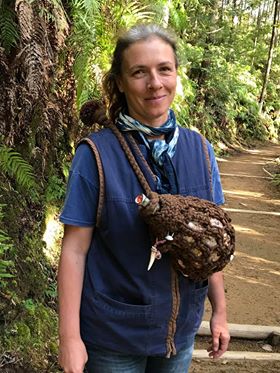
1) You are a guide in Wakayama Prefecture which contains the UNESCO World Heritage trails of Kumano Kodo. How long have you been there, and how did it come about?
I came to Japan in 2005 and joined the Executive Training Program (ETP) Japan in Tokyo. All was set for a corporate career and life in Japan’s capital. I had lived in London for 9 years before and worked as a research manager at a company near Oxford Street, so coming to Tokyo was a new challenge and a step up. Deep down, however, I craved for nature and living in the countryside. I grew up in a small village and spent a lot of time outside in the woods and fields during my childhood.
While living in Tokyo, I visited Kumano several times and walked the Kumano Kodo trails. I fell in love with the area and wanted to live there. This is also when I came across Shugendo, a spiritual tradition of mountain asceticism. I started training with a teacher who came to Tokyo once a month. At some point I just wished I could live near his temple and commit to serious training.
Quitting Tokyo is not easy but then came March 11 2011 with the Triple Disaster (Earthquake, Tsunami, Nuclear Meltdown) in Tohoku. This gave me an ‘excuse’ to leave the metropolis and move to a remote region, basically going from one extreme to another. My Japanese partner and I just packed up and on July 1 2011 we drove down with no place to live and no work lined up.
In 2013 I had a chance to participate in the first Interpreter-Guide Training of Wakayama Prefecture and became a licensed guide for the Kumano Kodo pilgrimage trails and for Koyasan, the Shingon Buddhist monastery in the north of the peninsula. In 2020 I also passed the Koyasan guide license examination at Kongobuji, the head temple of all Shingon Buddhist temples.
Having these licenses opened doors for work in an area where there is little employment, however, I did the training also for myself to learn more about the pilgrimage traditions on the Kii Peninsula, and about Saint Kobo Daishi and Shingon Buddhism, both of which I had a strong interest in by then. I started guiding “regular” tours and took foreigners around Koyasan and around Kumano and walked the pilgrimage trails with them as part of hiking tours.
This is how I became a guide. I worked full-time as a tour guide for a tour operator from 2013 to 2018, which often took me to other parts of Japan and away from Kumano again. I decided then to go freelance and take the next step: to set up on my own. This became the Kii Monogatari – the story of the Kii Peninsula and my story living here. I cannot separate one from the other. As such, the Kii Monogatari is not a “product” like a tour but it is an evolving journey in which I am as much a traveler as are people who visit here. This year will be my 10th anniversary on this beautiful peninsula to which I am totally committed now.
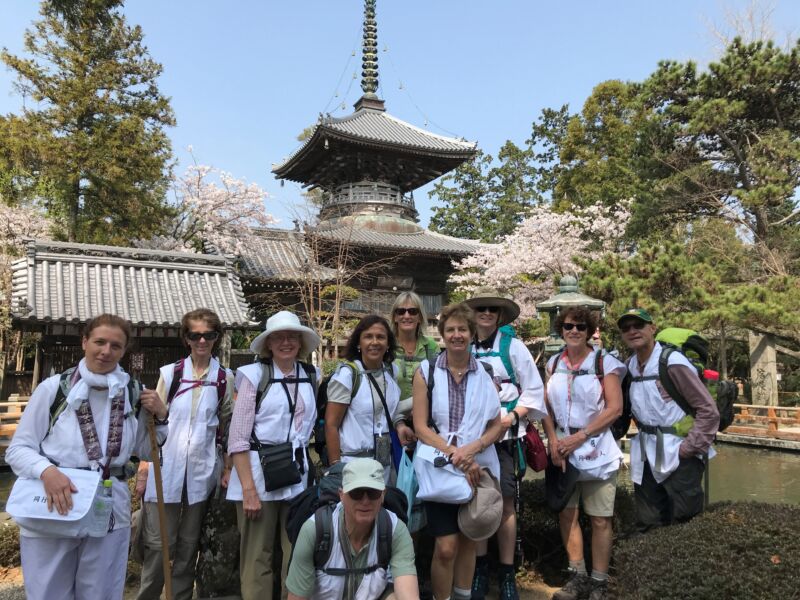
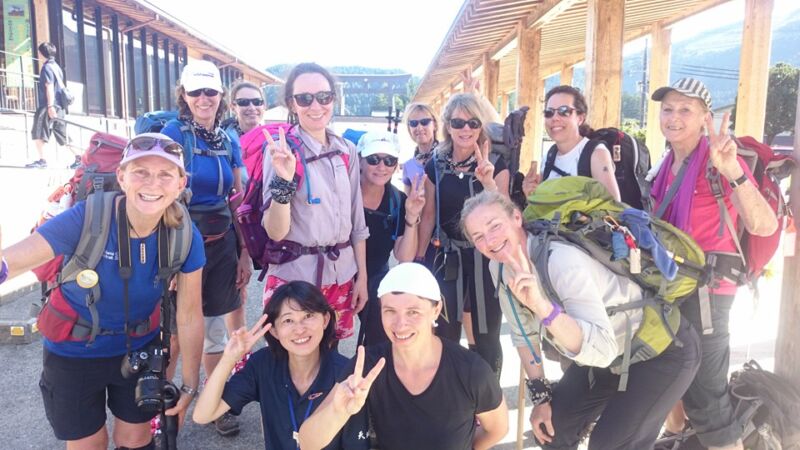
2) How did your life before coming to Kumano inform your current activities?
There is no short answer to this question. My interest in nature and spirituality come from my upbringing in a small village in East Germany. My family is Protestant Christian. We were practicing Christians in a socialist state before The Wall came down in autumn 1989. After this life-changing event it took me some time to deal with something that resembled a “culture shock” and my next mission was to learn English, get a degree and climb the career ladder. During these years I focused on study and work. I had discovered the esoteric section in the bookstores and eagerly read one book after another.
This went on until I got to Tokyo and went through Japanese language and business training on the ETP program. It was a high-level training aimed at young managers in European businesses dealing with Japanese clients. I felt privileged to be on this program and at the same time I could not shake off the feeling that there was something lacking, something that did not quite fit.
After the end of ETP I took the radical decision to explore the feeling and signed up for intensive aikido training and for taiko drumming, and I started jogging through Tokyo. A whole new world opened up. All three activities were physically strenuous more than spiritual. I wanted to explore where they would take me. First, I committed myself to running the first Tokyo Marathon. I was no runner and had just started jogging but I pushed myself and crossed the finishing line in February 2007. Then I signed up for the Senshusei training in Yoshinkan Aikido, an 11 month aikido boot camp. It took me from scratch to the Black Belt in 2008. In the same year I signed up for the Monkansei training at Oedo Sukeroku Taiko and I trained with a group of people until I left Tokyo.
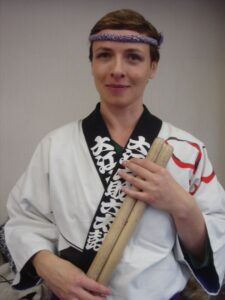
These activities taught me about “mind over matter”, but also that a healthy body hosts a healthy mind. They taught me about following a traditional “way” as a lifestyle, being patient, diligent and determined, about the importance of the master-deshi relationship and the value of my training group and training partners. There were so many traditional and cultural things that I learned about Japan that the corporate training had not taught me.
These were all experiences that would form the base for my Shugendo training, which started for real after my move to Kumano.
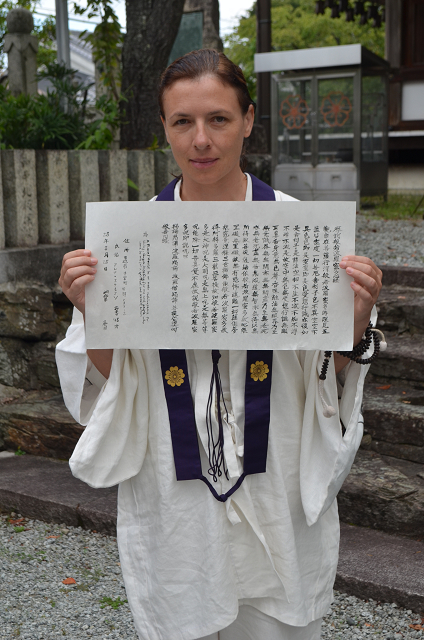
3) You offer spiritual tours, which draw on your own experiences and practice in Shugendo. Could you tell us about your spiritual training?
Soon after moving to Kumano I entered a 21 day training period at Sangakurin, my Kumano teacher’s Shugendo temple. The training was Kaihogyo, an ascetic practice that consists of “circling the mountains”, playing the Hora (conch shell) and prayers at certain places in the mountains. The 10km course was the same every day for 21 days. I memorized the prayers in Japanese during this time, including the Hannya Shingyo (Heart Sutra) and mantras dedicated to En-no-gyoja, the Founder of Shugendo, Fudo Myoo and Zao Gongen, central deities in the Shugendo tradition.
Since then I have walked this Kaihogyo course every year in December for one week. This training is my winter shugyo (ascetic exercise) and it is dedicated to Shakka Nyorai’s Nehan. My summer shugyo is walking the Okugake, the Shugendo training trail that connects Kumano with Mount Yoshino. This is a 7-day walk across a mountain range that consists of countless peaks at an altitude of 1,000 to 2,000 meters. Along the trail are 75 nakibi, places for prayer.
Regular training has been gongyo, a formalized service of veneration and worship that is usually done twice a day. It involved memorizing many more mantras for specific deities but I love chanting and devotional prayer. There are training periods of 3, 5 or 7 days that I commit to danjiki (fasting) and meditation. There are periods of training that involve misogi and takigyo, purification in water or under a waterfall. Difficult training includes 3,000 prostrations to the Buddhas in 3 days and chanting the Lotus Sutra, all 28 chapters.
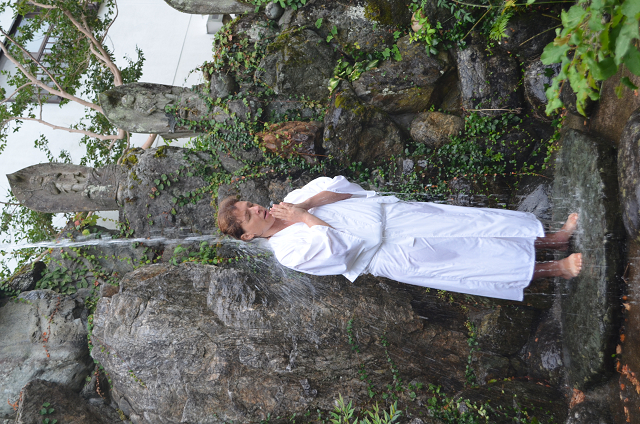
In May 2016 I received Tokudo at Sakuramotobou Temple on Mount Yoshino. My dharma name is Yushu. Since then I have received transmissions from my teachers in Shugendo rituals. Training is ongoing and transmissions take place when my teachers consider me ready. I try to attend the services at my teachers’ temples whenever possible and there attend gongyo services, monthly goma (fire ceremony) prayers and festivals throughout the year.
In addition to the rituals, there are many more activities that are maybe not spectacular but they are part of training, such as cleaning the temple halls and temple compounds, weeding, wood-cutting, preparing for ceremonies and helping at festivals. Some are seasonal and related to the teachers’ temple activities, such as planting and harvesting rice, or supporting the mountain entry of a group of 30 men by preparing their futons and meals.
In recent years there has been increasing interest in Shugendo, and there have been more and more requests to me to help coordinate and guide pilgrimages, kaihogyo walks or weekend retreats with a Shugendo theme. I understand that this is also part of my training to become a Sendatsu, a guide and leader of pilgrimages.
My teachers have already given me the opportunity to help guide various people, including groups of women, groups of teenagers, media representatives, researchers and foreigners with a strong interest in Shugendo. I have also been asked to plan, coordinate and guide “spiritual tours” for a number of groups from Taiwan, the USA and Australia. This is how Kii Monogatari has gradually emerged over the last few years.
(Part Two of this interview can be read here.)
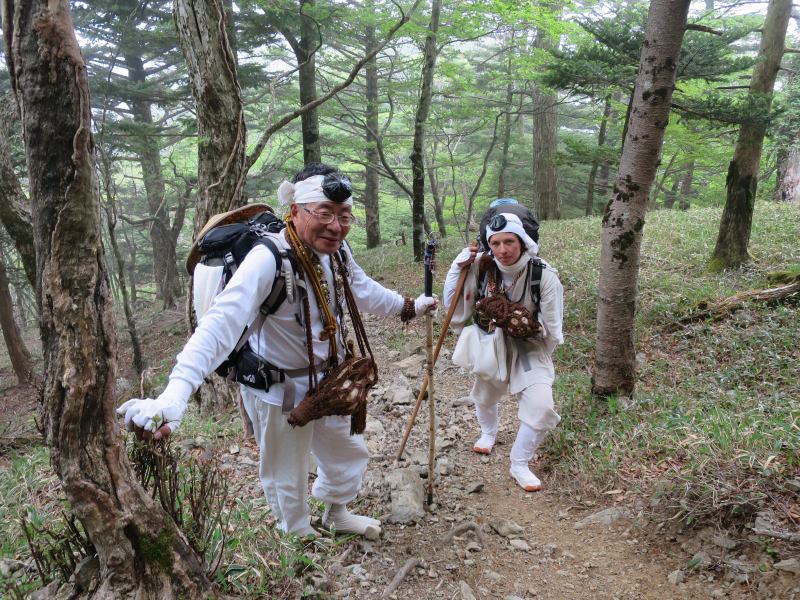

I learned about yamabushi in 1984 when I was at Haguro-san (Dewasanzanhaguro range) and made my first trip to Japan. I was with the Sierra Club on a trip through Tohoku. We didn’t backpack, but traveled throughout the region on public transport. It was quite impossible to know more about it in English for many years, and certainly as a woman, I was not invited to know more. Congratulations on your achievement. I, too, feel deeply connected to the spirit and spirits of the natural environment.
Thank you for this wonderful interview. I stayed and trained on Mt Omine a few years ago and have done some other Shugendo training too, beautiful and rich practice.
Is she superwoman?
Probably not, but she certainly is a model of how much can be accomplished if you are determined and dedicated. Mind you, her accumulated spiritual powers may well have given her superwoman qualities!